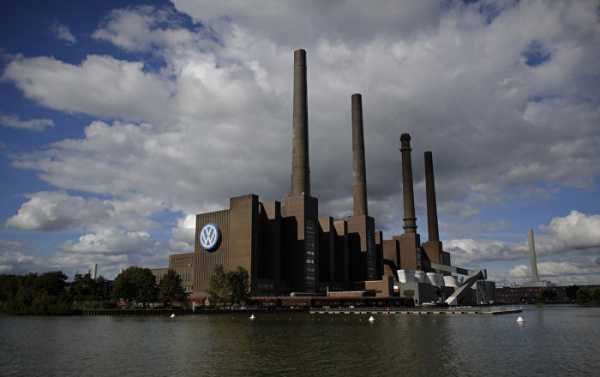
Germany’s industrial production posts a mild recovery after a sharp contraction earlier this year, but experts say the rebound is likely not sufficient enough, to reinvigorate the nation’s economy, and Berlin should take action to prevent a possible recession.
Kristian Rouz – Germany’s powerhouse economy gained some momentum after the brief turmoil of late 2018 – early 2019, but recovery remains feeble, as international trade woes continue to weigh on the nation’s exports. Nonetheless, German industrial production rose in May, the most recent data show, suggesting the nation’s Q2 GDP reading could exceed earlier expectations.
According to the German Federal Statistics Office (FSO), the nation’s industrial output rose 0.3 per cent month-on-month in May, after a sharp 2-per cent decline in the previous month. However, it is still 3.7 per cent down year-on-year.
Excluding the seasonally-sensitive construction and energy sectors, German industrial output rose 0.9 per cent, and production of capital goods rose a solid 2 per cent.
However, economists are not impressed.
“It now looks almost certain that industrial production declined in the second quarter overall, contributing to a sharp slowdown in German GDP growth, if not an outright contraction,” Andrew Kenningham of Capital Economics said.
Experts say the lingering Brexit uncertainty, trade tensions between the US and China, and an overall economic slowdown across the EU have all contributed to the ongoing economic slowdown in Germany, The latest batch of data, albeit bucking the trend somewhat, does not appear to be enough to reverse the broader tendency, as Germany may be nearing a recession.
Still, the FSO reported that German exports rose 1.1 per cent month-on-month in May – compared to 0.5-per cent growth predicted earlier. Additionally, German imports dropped 0.5 per cent, contributing to a $20.99-billion rise in Germany’s trade surplus.
In the first quarter of this year, the German GDP rose 0.4 per cent as solid consumer spending made up for the turmoil in manufacturing. Now, the German Bundesbank forecasts a mild contraction in Q2 of 2019.
Economists say Bundesbank, along with the European Central Bank (ECB) could enact an additional monetary stimulus, or at least delay the planned policy normalisation, in the wake of German turmoil. Additionally, the German federal government could introduce limited fiscal stimulus to support its ailing industries.
Separately, German industrial orders dropped 2.2 per cent in May, pointing to a cooling demand for German manufactured goods and a likely drop in exports going forward.
“As other economic indicators have also disappointed, the prospect of a decline in economic performance is increasing,” Alexander Krueger of Bankhaus Lampe said. “Growth forecasts are likely to be further reduced.”
Additionally, a report by German think-tank Ifo found German manufacturers may reduce the number of hours worked at their facilities in the coming months – a move that would prevent factory lay-offs, but it would also hurt the purchasing power of German households.
This could contribute to further erosion in German manufacturing output, while consumer spending would also suffer – likely affecting the retail sector. In this light, a full-blown recession, or two consecutive quarters of GDP contraction, could be likely.
On the upside, some economists say a modest industrial rebound in May could be followed by stronger performance in the following months.
“It could have been worse and the increase in production in the manufacturing industry, in particular, indicates that it’s not all shock-and-awe in German industry,” Carsten Brzeski of ING Germany said.
Germany’s positive foreign trade balance, solid labour market, and firm presence in Eastern European markets could potentially offset some of the longer-term risks posed by Brexit or global trade woes.
Still, some say only a trade deal between the EU and the US could bring Germany back to sustainable growth in the years to come.
Sourse: sputniknews.com






